Hydroponics farming is defined as the process of growing plants without soil. Depending on the grower’s needs, there are many different ways to do this. When you want to build or use hydroponics to grow plants, there are different hydroponic systems available for you to use. It is an easy way to use and adaptable to your farm. Let’s check out the 16 key rules for effective hydroponics management below.
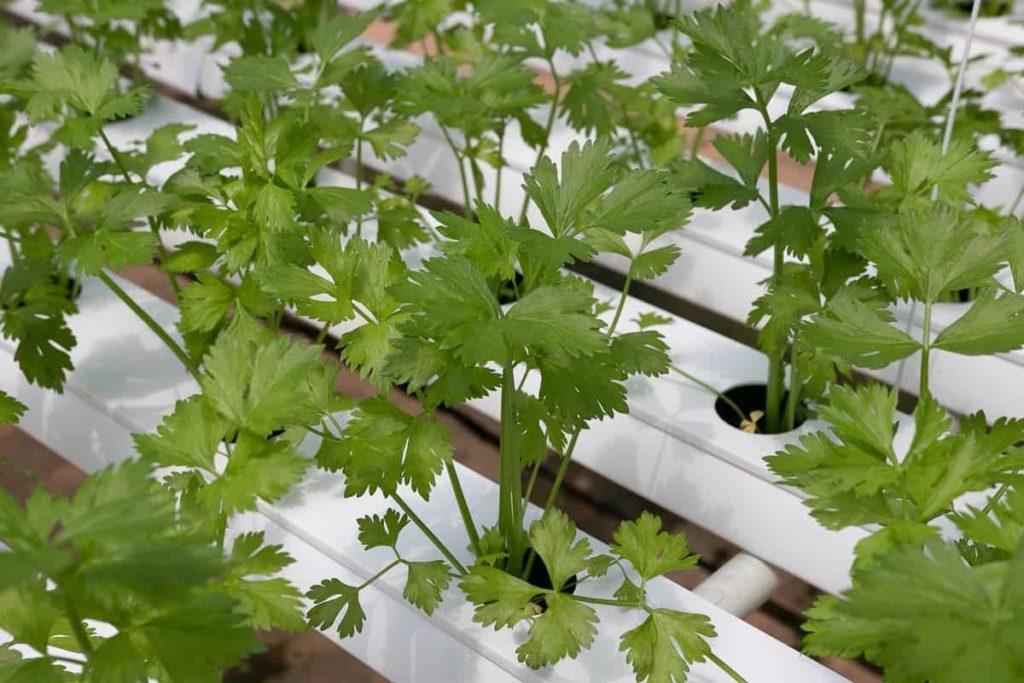
Key rules for effective Hydroponic farm/Garden management
Key rules for the importance of hydroponic farming
Hydroponics is a method of leaving the soil, adding a different material to support plant roots, and growing crops directly in nutrient-rich water. There are several ways to design hydroponic systems, but the essential elements are essentially the same. Hydroponics is considered a type of hydroculture. It is a technique that helps in plant growth. It utilizes a wide range of mineral nutrients without using soil for cultivation. Fish waste, duck manure, and other common nutrients are important sources of nutrients in hydroponics.
Advantages of hydroponics
- Plants can be grown anywhere throughout the year.
- Greater control over growing conditions for faster growing times and increased crop yields.
- No weeding required.
- Water savings, up to 90 percent.
- No crop rotation is required.
- Plants can be stacked close together and vertically.
- The material can be reused.
Key elements needed for a successful hydroponic system
The essential elements in large quantities are nitrogen, phosphorus, potassium, calcium, magnesium, and sulphur. Micronutrients – iron, manganese, boron, zinc, copper, molybdenum, and chlorine are also needed but in very small amounts. Among other alternatives, it uses a nutrient-rich water solution. Moreover, hydroponic crops can be grown at home.
Effective rules for hydroponic system working
Hydroponic systems can be either active or passive. Active means that the pump will normally move the nutrient solution. Passive relies on a wick or mounting media anchor. Hydroponic systems are also characterized by recovery or non-recovery. Recovery means that the nutrient solution will be recycled back into the system. Meanwhile, the nutrient solution is applied to the growing media without recovery and disappears. A basic hydroponic system will look like the image on the right. Meanwhile, plant roots need three things, water/moisture, nutrients, and oxygen.
Key rules for managing a hydroponic farm
- Choose a crop that best suits your agribusiness needs.
- Create a favorable farm environment with automated controls.
- Measure and maintain the proper pH level of the nutrient solution.
- Minimize pest infestations with smart farm management.
In case you missed it: Top Hydroponics Companies in India
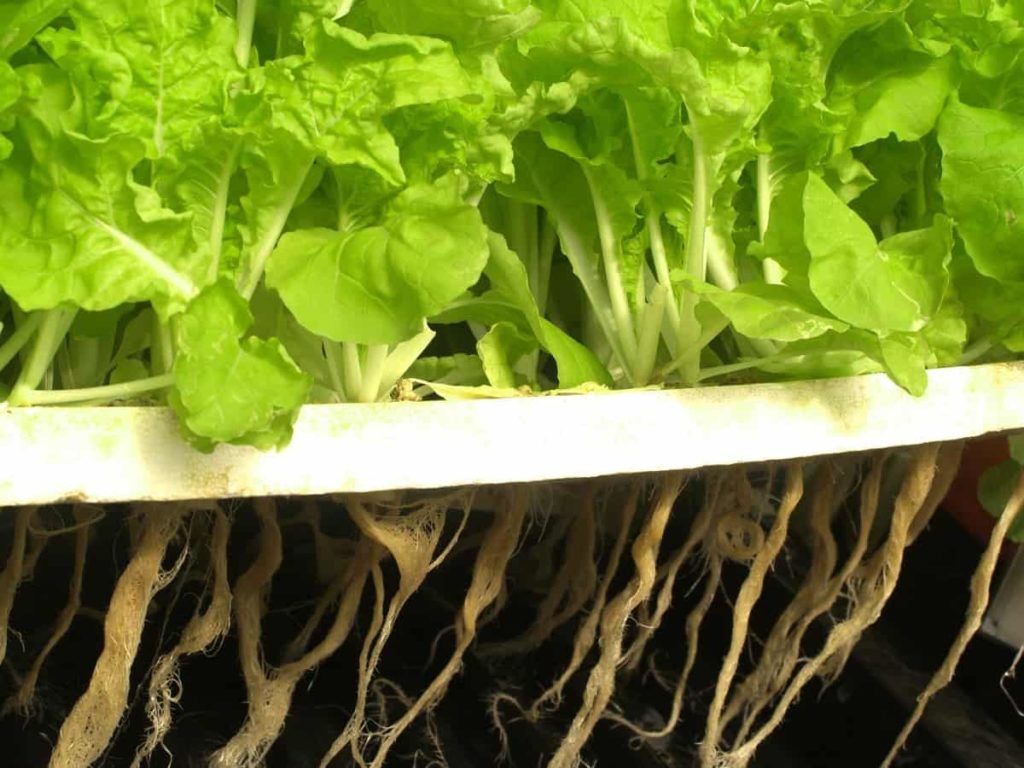
Recharging the nutrient solution in hydroponics: In an open system, the nutrient is applied only once to the crop plants. The nutrient solution is used once in a closed system, then analyzed for pH and nutrients and adjusted to appropriate levels. Finally, it should be disinfected and returned to vegetation to control the spread of pathogens. Common sterilization methods include heat, ultraviolet radiation, and ozone.
Sterilizing of hydroponic media: Medium culture hydroponic systems are susceptible to pathogenic microorganisms accumulating in the medium with each successive crop. For best results, it is recommended to disinfect the system between each harvest.
Equipment for building an effective hydroponic system
- The growing chamber – A growing chamber is a container for plant roots.
- Reservoir – Choose a reservoir for the plant nutrient solution.
- Submersible pump – A submersible sump pump is specifically for sump systems. It is essentially a collection tank for all runoff from the hydroponic system. The pump helps move water to and from the tanks and can also be used to mix nutrients in the tank.
- Delivery system – A nutrient delivery system that may apply to growing plants in microgravity is described. A nutrient delivery system will help ensure that your plants receive the optimal nutrients in the right proportions.
- Simple timer – This is a basic mechanical timer that gives you the ability to set a daily schedule for your hydroponic garden. Timers are an important tool; learn how to set a mechanical timer and repeat your success as you grow.
- Air pump – The simplest method is to use a hydroponic air pump. Not only does an air pump helps create more dissolved oxygen in the water for plants, and helps prevent algae and disease growth in the reservoir. The best hydroponic air pump setup has three components: air pump, air stone, and tubing.
- Grow lights – The most common bulbs are LED, fluorescent, metal halide, and high-pressure sodium. LED (Light Emitting Diodes) lights are one of the newest forms of hydroponic lighting. They are the most cost-effective and energy-efficient methods of lighting.
Requirements for effective hydroponics farm management
Six things are needed: light, air, water, nutrients, heat, and space. Hydroponics can be done indoors or outdoors. In either setting, plants need five to six hours of light per day, access to electricity, and an area that is level and not overly windy. To be successful as a hydroponic grower, one must be aware of the exact needs of plants for optimal growth. Plants generally need water and nutrients to grow, but three other essential factors are often overlooked: air, light, and climate.
Key rules to reduce the production cost of hydroponics
Setting up a small hydroponic system at home can be inexpensive and uncomplicated. You can design your system or buy a pre-made kit. Once you have a system in place, you may find that hydroponic gardening is less expensive and time-consuming than what you were doing before. For example, an average acre of traditionally farmed land will earn a farmer between $20,000 and $30,000 annually.
An average acre of crops grown hydroponically will generate between $200,000 and $250,000 annually. Different ways you can save money in hydroponic farming from a crop cycle perspective.
- Avoid buying liquid concentrates as fertilizers
- Prepare your compost mix for macronutrients
- Make your foliar remedies
- Use a recirculating nutrient system
Key rules for selecting an effective hydroponic system
There are mainly six types of hydroponics that you can benefit from. Some are better suited for commercial projects, while others are relatively easy to maintain at home.
In case you missed it: Solar Powered Hydroponics – A Full Guide
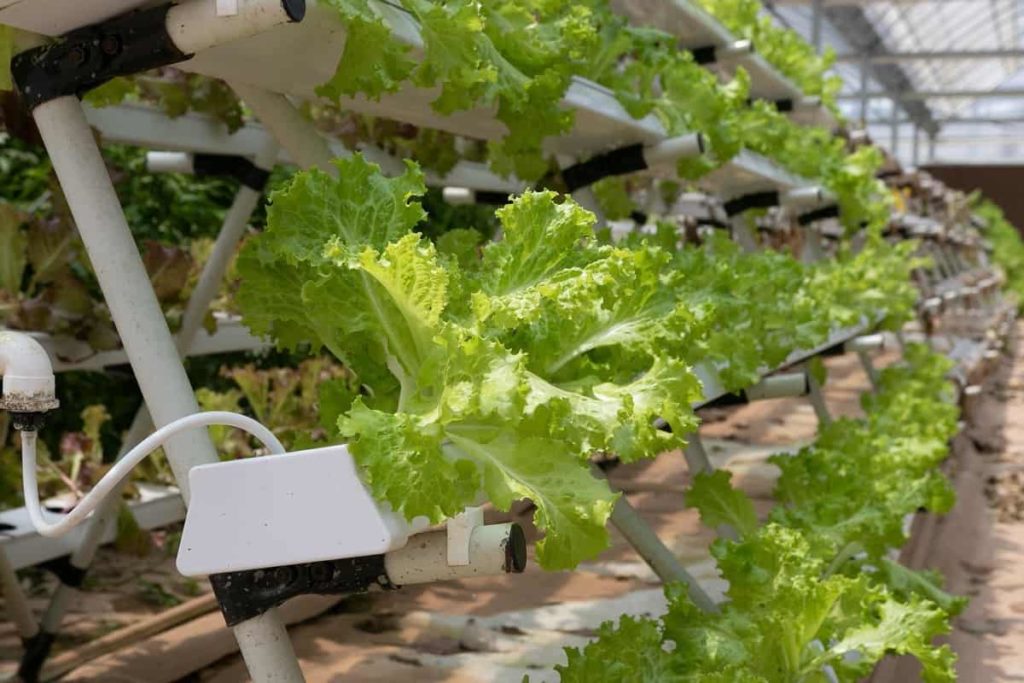
1. Deep Water Culture (DWC) Systems – Deep water culture is one of the easiest forms of hydroponics to explain because it is so straightforward. With this system, your plant’s roots will be completely submerged in the nutrient-rich solution, allowing them to absorb nutrients. Most companies will use it to hydroponically grow Lettuce and other plants that can be placed on free floats.
2. Nutrient Film Technique (NFT) Systems – When using NFT, you won’t have to worry about relying on a growing medium to preserve your plants. The process is entirely water-based and requires pre-designed channels for nutrient delivery. You’ll need to inject a nutrient-rich solution into your reservoir, which will then be pushed into the channels. Nutrient Film Technique When designing a hydroponic system, you will need to use smaller plants, especially since the channels are smaller.
3. Wick system – The wick system is easily the simplest hydroponic system you can use to grow plants, meaning practically anyone can use it. The Vic system is notable for not using aerators, pumps, or electricity. It is the only hydroponic system that does not require electricity. With most wick systems, plants are placed directly inside an absorbent material such as perlite or vermiculite. Thus, this system is ideal for small garden plants and herbs. Any plant that does not require a significant amount of water will grow well in this particular system.
4. Drip systems – Fortunately, a drip is a hydroponics system that is easy to maintain and customize to your needs. With this system, you will use a drip system with complete control over how much solution each plant receives. You can then easily adjust the solution flow depending on your plants and how often they need to be fed. Drip systems also offer considerable flexibility in terms of scale as they can be large or small. You can also choose between circulating and non-circulating formats; circulating systems work with a continuous drip.
5. Ebb-and-flow systems – This type is often called flood-and-drain. Plants are usually grown in pots with roots supported by a growing medium. When the pump is turned on, the tray is filled with water. When the pump is turned off, the water flows back into the reservoir through the pump. The ebb and flow method provides plenty of fresh oxygen to the plant’s root system – first, as the tray fills with solution, the air is pushed out from around the root system. Then, then the pump is turned off, the tray is removed, and oxygen-rich air is drawn to the roots.
6. Aeroponic systems – Aeroponics is an interesting improvement over hydroponics. Roots are grown in a moist, humid environment with minimal growth media. Due to continuous water circulation and high-pressure pump action, the oxygen level in the water is kept high.
Key rules for sleeting best plants to grow in a hydroponic system
- Lettuce (e.g., Romaine, Butterhead)
- Leafy greens (e.g., Spinach, Kale, Arugula)
- Asian greens (e.g., Bok Choy)
- Herbs (e.g., Mint, Basil, Cilantro)
- Microgreens (e.g., Micro Broccoli, Red Sorrel)
Selecting the best growing medium for hydroponics
But with hydroponics, you don’t use soil. Instead, the plants are fed a water-based mineral nutrient solution. However, they still need a growing medium, the material to grow on, also known as a substrate. The four most popular media for hydroponic systems are Rockwool, light expanded clay aggregate, coconut fiber, and perlite.
There are different reasons why growers may choose to use one aggregate system over another:
- Other methods may be cheaper.
- It can be very easy to set up and manage.
Depending on the hydroponics setup, large or small, in floods and drains, small aggregates are best. In drip systems, larger aggregates can be used.
Rockwool – Rockwool is one of the most popular growing media for assortment plants. This material is made from molten rock and then spun into cubes with a distinct fibrous texture.
Perlite or Vermiculite – Another incredibly popular form of aggregate for your hydroponic system is perlite or vermiculite. These materials are also made from stone, similar to Rockwool. It is derived from volcanic rock, while vermiculite is usually made from mixed mica. Together, these two substances are light and white that can be added to soil to improve aeration and drainage.
In case you missed it: Organic Hydroponics Farming, Cultivation Practices
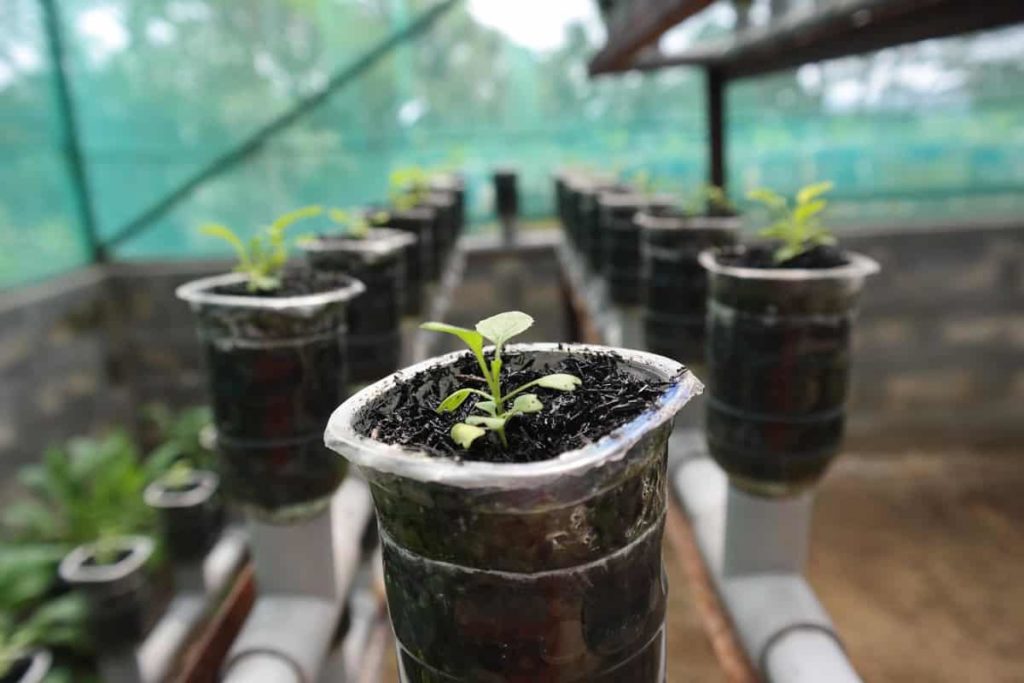
Coco Coir (Coconut Coir) – Also known as coconut coir, coconut fiber is an incredibly popular material for various hydroponic systems. This material could potentially surpass both perlite and Rockwool in popularity. This material is obtained from coconut husks and is generally considered waste. Instead of manufacturers throwing away the material, gardeners can use cocoa coir for their gardens.
Rules to start vertical farming hydroponics
The vertical hydroponic system combines two modern agricultural techniques – vertical farming and hydroponic farming. Let us consider each of them separately.
- Hydroponics is a farming process using water instead of soil as a medium. Nutrients are added to the water line for all crops to enhance their growth resulting in better crop yield and yield. Vertical hydroponic farming uses reliable greenhouse production principles and techniques, making it ideal for urban farming in densely controlled environments, replacing traditional farming methods that require more space.
- Growing various plants without soil is far from traditional farming techniques, but it’s a great way to solve space and efficiency issues.
- A vertical farming system arranges multiple layers of growing trays in stacks. In each of these, plants are grown in nutrient-rich water rather than soil. Also called a vertical hydroponic system, this grows an automation system is an excellent option for growing large quantities of fresh produce even when space and other resources are limited, especially in urban cities.
- Plants in different layers receive regular irrigation through feeding with nutrient-rich solutions. The pump helps distribute the water and nutrient solution to all the vertical hydroponic farming system plants.
Effective tips for getting maximum yield in hydroponics
- Keep pests away – No matter what you do, if you choose to grow your plants outdoors, you must deal with pests and animals.
- Choose a crop that best suits your agribusiness needs – Compared to traditional outdoor farming; hydroponics is a fairly expensive and complex process. However, the complexity and production cycles associated with managing a hydroponic farm vary by crop. Choosing the right crop to grow is essential to getting the most out of your hydroponic farming practices. While hydroponics involves advanced production technologies, maintenance costs for this farming are already quite high. Agribusiness should focus on growing low-maintenance and high-yielding crop varieties for better profitability.
- Measure and maintain proper nutrient solution pH levels – Knowing how acidic or basic your nutrient solution is important because it affects nutrient availability to your hydroponic crops. Inadequate pH levels can inhibit nutrient uptake and result in severe malnutrition. Furthermore, pH fluctuations are a common aspect of every hydroponic farming system. In hydroponics, growers must constantly monitor and adjust the pH level of the nutrient solution to produce a high-quality crop. The most important step in achieving this is testing. You can use test strips to measure the pH level of your nutrient solution regularly. The range of ideal pH levels varies for each crop, but most plants grow well in a pH range of 5.5 to 6.5.
Organic hydroponics for reducing production cost
Within an organic hydroponic system, there is a big difference in how you approach plant nutrition. With traditional hydroponics, you must follow pre-supplied instructions for different fertilizers and regularly monitor and test your water. You will need a system for successful organic hydroponics that ideally includes:
- Biofilter
- Oxygenation
- Hydroponic medium/substrate
Getting nutrients right is the most important point of organic hydroponics. Organic fertilizers will likely not be able to provide a sufficient proportion of all essential minerals. However, some mineral salts, such as magnesium sulfate and other sulfate trace elements, can be used in organic production. They can help you overcome the potential drawbacks of organic fertilizers.
Different ways to save money in hydroponics for a successful farm
1. Avoid buying liquid concentrate as fertilizer – Liquid fertilizers have some intrinsic advantages – like their uniformity – but they contain a lot of water, which means you’ll need to apply more than a pound of water for every pound of fertilizer you get. It will significantly add to the cost of the fertilizer, even if you buy bulk fertilizers for a commercial crop. Always buy solids to save on these costs when buying single bulk or blended fertilizers.
2. Prepare your fertilizer mix for macronutrients – The most complicated part of composting is usually the micronutrient part of the compost, which you can buy if you want to be as simple and cheap as possible – some companies sell micronutrients specifically and then produce all macro-fertilizers.
3. Make your foliar treatments – Foliar sprays can significantly reduce problems and increase crop yields, so it’s usually best to make sure you use foliar sprays throughout your crop rotation.
4. Use a recirculating nutrient system – Drain-to-waste nutrient setups are extremely wasteful. If you want to get an affordable crop to need to switch to a proper recirculating setup.
Key rules for a successful hydroponic system
Research hydroponics before you grow – Each plant you decide to grow with hydroponics will differ from the next. Even one batch of tomatoes can behave differently than the next batch. Before growing, research each crop and learn about its pH, temperature, nutrient, and light preferences. It is for any grower—even the most seasoned gardener. Once you know the ideal environment for each of your favorite crops, you can begin to imagine which crops you’ll plant next to each other and which crops you’ll grow in the same place simultaneously.
In case you missed it: Ebb and Flow Hydroponics, Advantages, Disadvantages
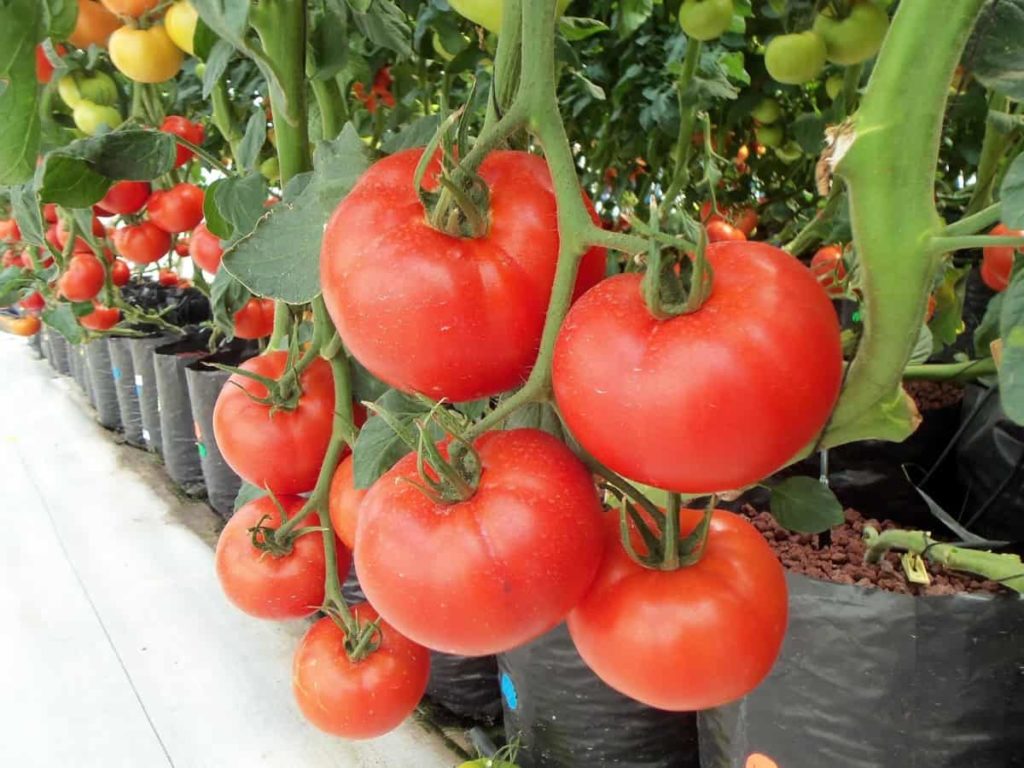
Double check that you have all your hydroponic equipment – You’ll need a long list of hydroponic equipment at each point in your growing experience, and keeping track of it all can be challenging. Create an initial checklist when you’re shopping for your hydroponic system.
Set a schedule – A regular schedule will help plants grow properly. For hydroponic growing tasks, hang a whiteboard where you can see daily, weekly, and monthly. You’ll also want to leave room for notes, such as plant growth progress or nutrient warning signs. Stay motivated with schedule and task, and your hydroponic garden will reward you with a bountiful harvest of beautiful crops.
Choose the right hydroponic method and medium – Choosing the best hydroponic growing method can be difficult when so many options exist. You can start with a wick or drip system before moving on to ebb and flow systems or nutrient film techniques. An even more advanced system is the aquaponics system, which combines a fish tank and a hydroponic garden. The fish provide fertilizer for your plants, and your plants provide the fish with clean, oxygenated air.
Monitor your pH levels – The pH of your nutrient solution is key to healthy plant growth – too high or too low a pH can stunt growth or kill them. Therefore, it’s important to test and adjust the pH as needed throughout the growing cycle with a simple test kit or pH meter.
Choose the right plants – Certain crops work better in hydroponics than others – you’ll need to decide which crops will give the best results for your system before you start growing. Some good plants include Tomatoes, Cucumbers, Lettuce, and herbs.
Keep your system clean – Regular maintenance of the hydroponic system is essential for healthy harvests. You must ensure that dirt and algae do not build up and infect your plants. If a plant is diseased or infected with fungus, clean the area immediately and change the water.
16. Problems and their solutions in hydroponics for successful business
- Root rot
- Mold growth
- Plant leaf problems
- Insects
Integrated Pest Management (IPM) is the most effective and environmentally sensitive method for commercial and home hydroponic settings. IPM is not the only method of pest control but rather a method based on repeated monitoring and the use of a variety of management techniques that depend on the user’s tolerance to the pest and the severity of the infestation.
The grower should set action thresholds based on economic risk, monitor and identify pests, and practice prevention and control for effectiveness and risk. The grower should use the most appropriate IPM technique for the current situation.
Waterborne diseases – Because plants grown hydroponically are grown in water rather than soil, waterborne diseases are much more common. With water constantly circulating through the system, infections can quickly spread throughout the growing system, affecting the entire plant community. In extreme cases, a waterborne disease can kill all the plants in a hydroponics system within hours.
In case you missed it: Hydroponics Farming Information guide
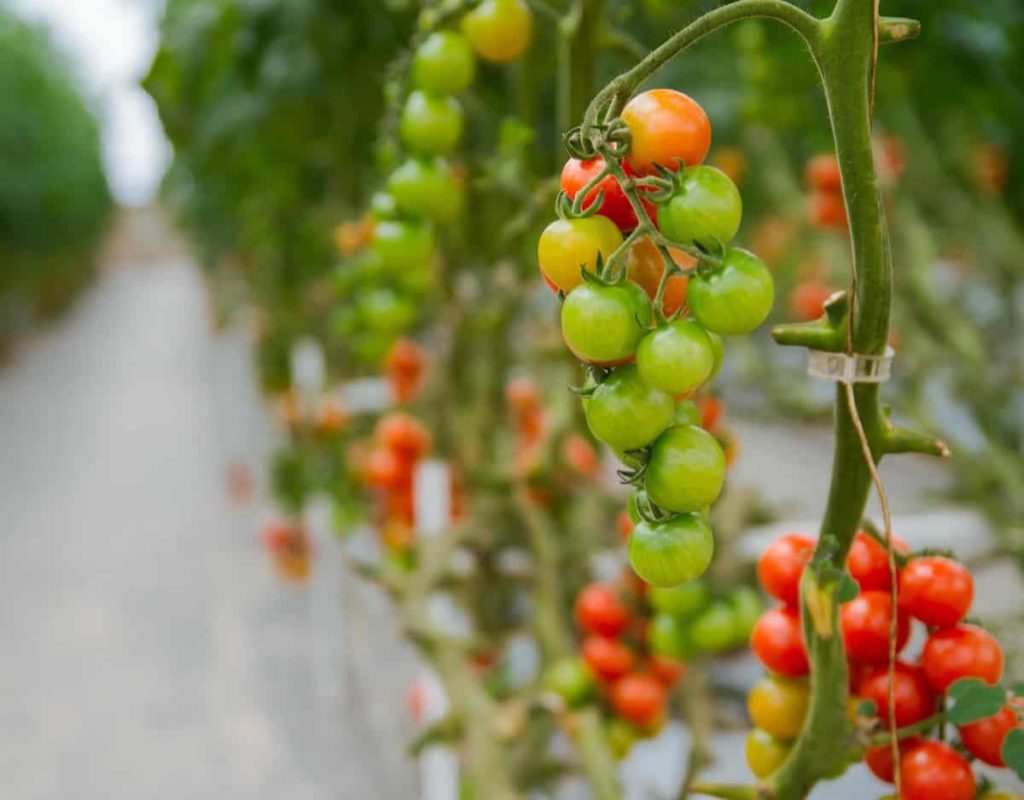
Problems affect plants early – Soil protects roots from extreme temperature changes, prevents disease and insect attack, and regularly releases and absorbs nutrients. Without soil acting as a buffer, plants grown in hydroponics systems react very quickly to nutrient deficiencies and disease problems.
Leaks in hydroponic systems – System leaks can occur for various reasons. Leaks can occur anywhere in the joints or valves of your system. They can also occur if your system shuts down, such as when a root mass clogs the NFT system, causing water to back up and collapse. Leaks can also occur when you build a system with a reservoir that cannot store all the nutrients in the system. Check the system regularly for root growth, clogged drains, or outlets. Choose a reservoir that contains all the nutrients at rest, not just the amount when the system is running.
Conclusion
Hydroponics farming is increasingly popular for growing plants that use a nutrient-rich solution with a water base. Instead, plant roots are supported by materials such as peat moss, clay pellets, perlite, and rock wool. Here, we describe the key rules for effective hydronic farming.
- Economical Aquaculture: A Guide to Low-Budget Fish Farming
- 15 Common Planting Errors That Can Doom Your Fruit Trees
- How to Make Houseplants Bushy: Effective Tips and Ideas
- Innovative Strategies for Boosting Coconut Pollination and Yield
- Pollination Strategies for Maximum Pumpkin Yield
- The Complete Guide to Chicken Fattening: Strategies for Maximum Growth
- Natural Solutions for Tulip Problems: 100% Effective Remedies for Leaf and Bulb-Related Issues
- Revolutionizing Citrus Preservation: Towards a Healthier, Greener Future
- Natural Solutions for Peony Leaf and Flower Problems: 100% Effective Remedies
- Maximizing Profits with Avocado Contract Farming in India: A Comprehensive Guide
- Natural Solutions for Hydrangea Problems: 100% Effective Remedies for Leaf and Flowers
- The Ultimate Guide to Choosing the Perfect Foliage Friend: Bringing Life Indoors
- From Sunlight to Sustainability: 15 Ways to Use Solar Technology in Agriculture
- The Ultimate Guide to Dong Tao Chicken: Exploring from History to Raising
- The Eco-Friendly Makeover: How to Convert Your Unused Swimming Pool into a Fish Pond
- Mastering the Art of Delaware Chicken Farming: Essentials for Healthy Backyard Flocks
- 20 Best Homemade Fertilizers for Money Plant: DIY Recipes and Application Methods
- How to Craft a Comprehensive Free-Range Chicken Farming Business Plan
- Brighten Your Flock: Raising Easter Egger Chickens for Beauty and Bounty
- How to Optimize Your Poultry Egg Farm Business Plan with These Strategies
- Subsidy for Spirulina Cultivation: How Indian Government Schemes Encouraging Spirulina Farmers
- Ultimate Guide to Raising Dominique Chickens: Breeding, Feeding, Egg-Production, and Care
- Mastering the Art of Raising Jersey Giant Chickens: Care, Feeding, and More
- Ultimate Guide to Raising Legbar Chickens: Breeding, Farming Practices, Diet, Egg-Production
- How to Raise Welsummer Chickens: A Comprehensive Guide for Beginners
- How to Protect Indoor Plants in Winter: A Comprehensive Guide
- Ultimate Guide to Grow Bag Gardening: Tips, Tricks, and Planting Ideas for Urban Gardeners
- Guide to Lotus Cultivation: How to Propagate, Plant, Grow, Care, Cost, and Profit
- Agriculture Drone Subsidy Scheme: Government Kisan Subsidy, License, and How to Apply Online
- Ultimate Guide to Raising Araucana Chickens: Breed Profile, Farming Economics, Diet, and Care
- Bringing Hydroponics to Classroom: Importance, Benefits of Learning for School Students
- Ultimate Guide to Raising Polish Chickens: Breed Profile, Farming Economics, Diet, and Care
- Ultimate Guide to Raising Australorp Chickens: Profile, Farming Economics, Egg Production, Diet, and Care
- Silkie Chicken Farming: Raising Practices, Varieties, Egg Production, Diet, and Care
- Sussex Chicken Farming: Raising Practices, Varieties, Egg Production, Diet and Care
- Homemade Feed Formulations for Livestock: Discover Cost-effective Starter to Finisher Feed Recipes